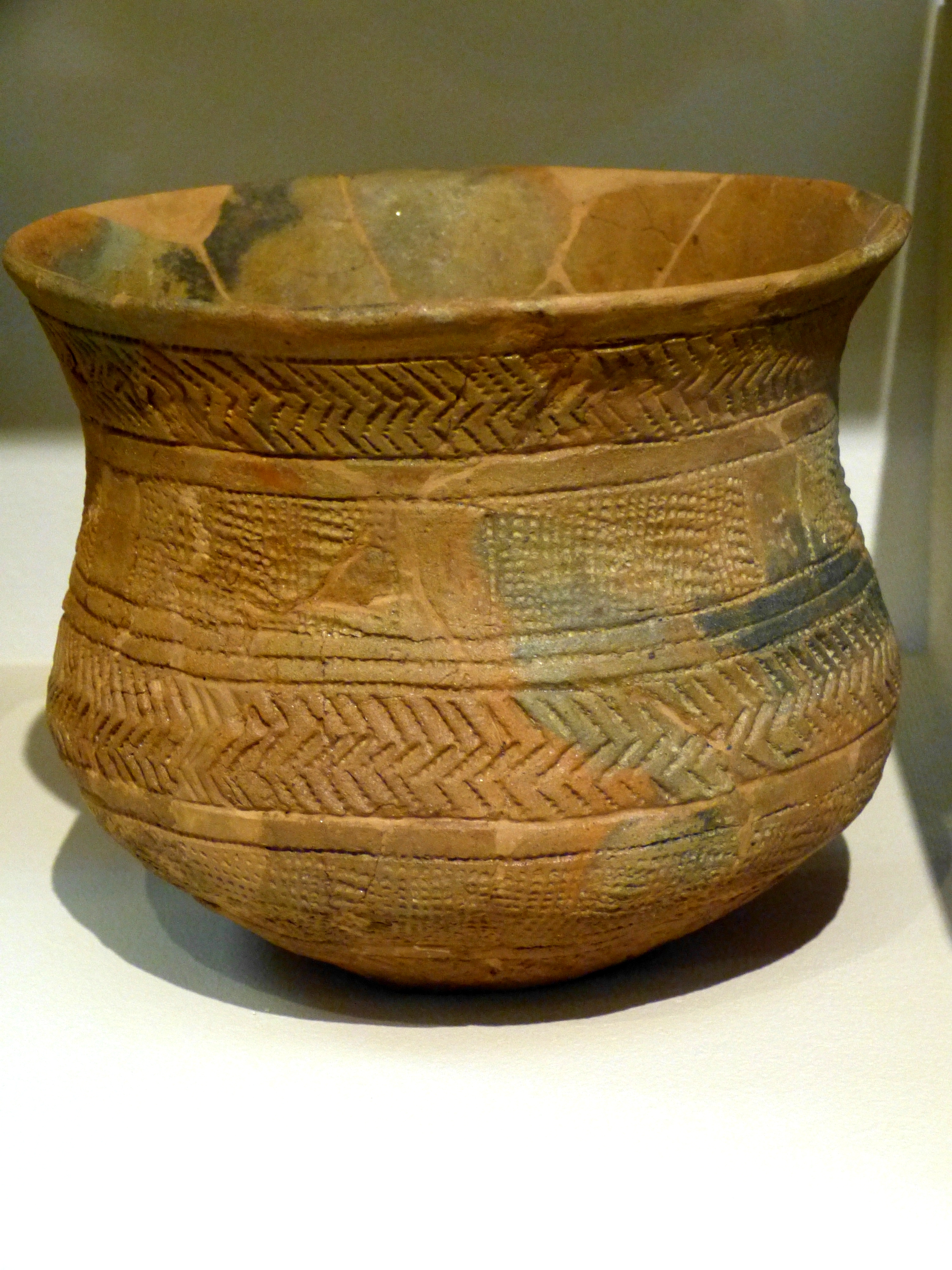 |
| A Bronze Age Beaker |
Archaeological theories based on the idea that different peoples moved across Europe, replacing indigenous populations, have long since been abandoned. But the identities of those driving cultural changes and shifts in populations has only recently become clearer, particularly as a result of collaborative projects between archaeologists, linguists and those working on ancient DNA. Who, for instance, were the Celts? The tribes called by the ancient Greeks Keltoi and by the Romans Celtae, who bordered, and occasionally attacked the Greek and Roman worlds until absorbed or contained by the expanding empire of Rome, have always escaped precise definition. It now seems that the statement by the Greek historian Herodotus (c.484 – c.425 bce) that the Keltoi lived “beyond the Pillars of Hercules” (i.e. along the Atlantic coast of Iberia) was one of the more accurate statements about the Keltoi of the ancient world. With the decipherment of incriptions at Tartessos using a Phoenician script as being in a Celtic language, and the identification of pre-Roman place names in Spain with the Celtic suffix ‘-briga’, supplementing the earlier identification of Celt-Iberian, a language which is quite distinct from the Gaulish spoken north of the Pyrenees, it seemed clear that there was a distinct Celtic presence in pre-Roman Iberia. Indeed, Barry Cunliffe has noted that " ... in the cradle of the Beaker complex by the lower Tagus, a unique Italo-Celtic language emerged that linguists call Lusitanian. In the Roman period, this language was used to commemorate pre-Roman gods."* Evidence from archaeology and aDNA has led to the view that speakers of an early form of Indo-European moved westwards, probably from Anatolia, and mixed with speakers of a non Indo-European language – possibly represented by Basque which is still spoken along the Atlantic coast of Spain and France – and that there eventually emerged a Celtic lingua Franca as these peoples became culturally dominant as far north as Britain and Ireland. That is, the Celtic languages developed in the west out of an early form of Indo-European, from which Latin also diverged, and developed at an early date, and by cultural and mercantile contacts rather than invasion, long before the Iron Age when the traditional chronology suggests the Celts moved to Britain.
In the most recent report on research(*) in the ‘Atlantic Europe in the Metal Ages’ project, Barry Cunliffe offers a chronology that shows Celtic language(s) developing between 5000-2700 bce when Atlantic networks of communication were also being established. Then spreading eastwards into middle Europe between 2700-1700bce. Celtic had become a common language by the Atlantic Bronze Age (1700-900 bce) but gradually became fragmented into different dialects and separate languages as other cultural and mercantile influences infiltrated its territory. It also moved eastwards to La Tène and further south and east to areas where Celtic culture flourished in the Iron Age before being replaced by Germanic and Slavic speaking cultures. But through all this movement the genetic make-up of populations did not always change substantially. That is, it was usually a change of culture and language rather than a replacement of the indigenous peoples themselves. An exception to this may have occurred between the Neolithic and the Bronze Age in western Europe, and particularly in Britain. In 2018 genetic researchers working on ancient DNA concluded that 90% of the indigenous British population were replaced when the Beaker culture was established in the Bronze Age.(**) Cunliffe wonders if this high number is an anomaly caused by DNA from the Neolithic population remaining undetected in the small number of Bronze Age samples, though archaeological evidence does show that there was a large change in the population of Britain at this time. Another researcher has suggested that a plague bacterium detected in the aDNA for this period may have had a devastating effect on the population in Britain where, as an Island, immunity levels may have been low.(***) As we are all now acutely aware, immunity is a valuable commodity in the survival stakes. Did the Britons of the Bronze Age succumb in catastrophic numbers to such a plague? Ongoing research may answer that question more definitively, but whatever the answer it is a chilling reminder that human survival is not guaranteed.
* Exploring Celtic Origins ed. Barry Cunliffe and John T Koch (Oxbow Books, 2019)
** Research by Olalde et al discussed in the above volume.
***Research by S. Rasmussen discussed in the above volume.
This is all news to me. Oladle's research is much at odds with Oppenheimer who claims that only a small percentage of Britain's indigenous population was replaced in the Neolithic and Bronze Age periods. The possibility of a plague is indeed chilling and particularly resonant at this point in time. I must check out this book!
ReplyDeleteOppenheimer’s research was based on widespread sampling of modern populations. The more recent research sampled ancient DNA from remains. Cunliffe’s reservations about the 90% figure are based on the limited sampling so far possible of the ancient DNA, but archaeological evidence does show a major change in material culture about this time, so something was going on. The book offers ‘interim’ findings from ongoing research, so this is a developing story.
ReplyDeleteIt will be interesting to see how it progresses!
ReplyDelete